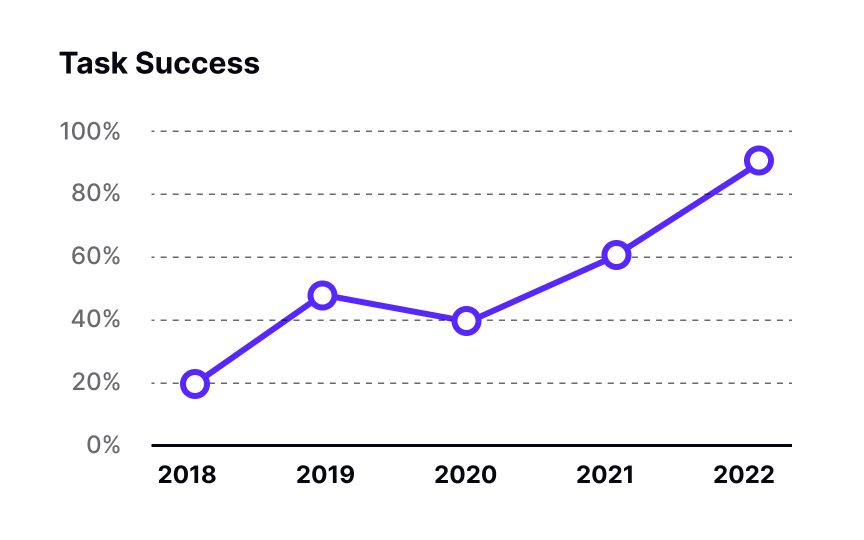Usability benchmarking
Usability benchmarking is a method of evaluating a product's usability with metrics collected through quantitative usability testing.
Like qualitative usability testing, quantitative usability testing asks users to perform tasks in a system. The only difference is that in quantitative usability testing, researchers focus on collecting metrics, like time on task or success rate. During qualitative usability testing, moderators observe and pay attention to usability issues that users encounter when performing a task.
Depending on your goals and budget, usability testing can be facilitated in person or held remotely with or without a moderator. The NN Group recommends inviting at least 40 participants for a quantitative usability testing study.[1]
The findings collected during usability benchmarking can be used for:

